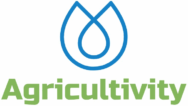Welcome to Agricultivity, your go-to educational website for all things urban agriculture! In this blog post, we will explore the fascinating world of pollinators and their essential role in urban gardening. Join us as we delve into the wonders of “Flower Power” and learn how to attract these vital creatures to your urban garden.
Why pollinators matter
Pollinators, such as bees, butterflies, birds, and other insects, play a crucial role in the reproduction of flowering plants. Their interactions with flowers facilitate the transfer of pollen, leading to fruit and seed production. Without pollinators, our urban gardens would suffer from reduced biodiversity and yield, impacting the overall health of our ecosystem.
Selecting the rights Plants
To encourage pollinators to visit your urban garden, it’s essential to select the right plants. Here are some tips on choosing the most attractive flora for your pollinator-friendly oasis:
Native Plants:
Opt for native plants as they have evolved alongside local pollinators and are better adapted to meet their needs. They often provide the most suitable food sources and shelter.
Diverse Blooms:
Incorporate plants with diverse flowering periods to ensure a consistent food supply throughout the growing season. This diversity attracts a wide range of pollinators.
Colorful Flowers:
Pollinators are naturally drawn to vibrant and colorful flowers. Reds, purples, yellows, and blues are particularly appealing to them.
Fragrance Matters:
Pleasantly scented flowers can entice pollinators from a distance. Consider adding aromatic plants to your garden to create an irresistible sensory experience.
Top Pollinator-Friendly Plants:
- Lavender (Lavandula spp.): This fragrant herb is a favorite among bees and butterflies. Its long blooming season and abundant nectar make it an excellent addition to any urban garden.
- Sunflowers (Helianthus spp.): Sunflowers’ large, bright blooms act like beacons for bees and birds, drawing them in with their nectar and pollen-rich centers.
- Bee Balm (Monarda spp.): True to its name, bee balm is a magnet for bees. Its striking appearance and sweet nectar make it a popular choice for pollinator gardens.
- Butterfly Bush (Buddleja spp.): As the name suggests, the butterfly bush is a paradise for butterflies. Its cone-shaped clusters of flowers provide ample nectar and are a visual delight.
- Wild Bergamot (Monarda fistulosa): Another member of the Monarda family, wild bergamot, attracts a wide range of pollinators, including bees, butterflies, and hummingbirds.
Creating a Pollinator-Friendly Environment:
Besides planting the right flowers, consider the following practices to make your urban garden a haven for pollinators:
- Avoid Pesticides: Reduce or eliminate the use of pesticides in your garden. They can harm pollinators and other beneficial insects.
- Provide Water: Create a shallow water source, like a birdbath or small pond, for pollinators to drink and cool off during hot days.
As urban gardeners, we hold the power to foster biodiversity and support vital pollinator populations. We can ensure a flourishing urban garden teeming with life by planting a diverse array of pollinator-friendly flowers and creating a welcoming environment. Join Agricultivity in embracing “Flower Power” and contributing to the well-being of our planet one garden at a time! Happy gardening!




